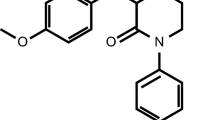Abstract
Objective: Fondaparinux sodium is the first in a new class of synthetic factor Xa inhibitors that binds reversibly with high affinity to antithrombin III. It has been investigated for the prevention and treatment of arterial and venous thrombotic disorders and approved for use at a dose of 2.5mg once daily in the prevention of venous thromboembolism in major orthopaedic surgery. The pharmacokinetics of fondaparinux sodium were determined in eight studies in young and elderly healthy volunteers.
Results: After a 2.5mg subcutaneous dose to young volunteers, absolute bioavail-ability was 100% and absorption was rapid and complete [peak plasma concentration (Cmax) 0.34 mg/L occurred at approximately 2 hours]. Within- and total-subject variability estimates were small: 5.5 and 11.6%, respectively, for Cmax and 4.4 and 17.5% for area under the concentration-time curve (AUC). Steady state was obtained after the third or fourth once-daily dose, with a 1.3-fold increase in Cmax and AUC. Distribution volume (7 to 11L) was limited to blood volume. There was no evidence of metabolism. Fondaparinux sodium was almost completely excreted in urine as unchanged compound (64 to 77% of the dose was recovered at 72 hours after administration). Plasma clearance was 5.1 to 7.9 ml/min, renal clearance 4.0 to 7.9 ml/min, and the terminal half-life was 17 hours in young volunteers and 21 hours in elderly volunteers. Pharmacokinetics of fondaparinux sodium were linear in the range 2 to 8mg subcutaneously and 2 to 20mg intravenously. Pharmacokinetics observed in healthy elderly volunteers were consistent with findings in young male volunteers.
Conclusion: The favourable pharmacokinetic profile of fondaparinux sodium is likely to play an important role in the major advance that the drug represents in the prevention and treatment of thrombotic disorders.






Similar content being viewed by others
References
Hirsh J, Weitz JI. New antithrombotic agents. Lancet 1999; 353: 1431–6
Gould MK, Dembitzer AD, Doyle RL, et al. Low-molecular-weight heparins compared with unfractionated heparin for treatment of acute deep venous thrombosis: a meta-analysis of randomized, controlled trials. Ann Intern Med 1999; 130: 800–9
Shetty HG, Woods F, Routledge PA. The pharmacology of oral anticoagulants: implications for therapy. J Heart Valve Dis 1993; 2: 53–62
Wells PS, Holbrook AM, Crowther NR, et al. Interactions of warfarin with drugs and food. Ann Intern Med 1994; 121: 676–83
Schenk JF, Glusa E, Radziwon P, et al. A recombinant hirudin (IK-HIR01) in healthy volunteers. II. Effects on platelet adhesion and platelet-induced thrombin generation time. Haemostasis 1996; 26: 187–94
Linder R, Blomback M, Egberg N, et al. Thrombin inhibitors suppress the thrombin-thrombomodulin-mediated generation of activated protein C. Thromb Res 1999; 95: 117–25
Herbert JM, Petitou M, Lormeau JC, et al. SR 90107A/Org 31540, a novel anti-factor Xa antithrombotic agent. Car-diovasc Drug Rev 1997; 15: 1–26
Choay J, Petitou M, Lormeau JC, et al. Structure-activity relationship in heparin: a synthetic fondaparinux sodium with high affinity for antithrombin III and eliciting high anti-factor Xa activity. Biochem Biophys Res Commun 1983;116:492–9
Olson ST, Björk I, Sheffer R, et al. Role of the antithrombinbinding fondaparinux sodium in heparin acceleration of anti-thrombin-proteinase reactions: resolution of the antithrombin conformational change contribution to heparin rate enhancement. J Biol Chem 1992; 267: 12528–38
Paolucci F, Clavies MC, Donat FA, et al. Fondaparinux sodium mechanism of action: identification of specific binding to purified and human plasma-derived proteins. Clin Phar-macokinet 2002; 41 Suppl. 2: 11–18
Lieu C, Shi J, Donat FA, et al. Fondaparinux sodium is not metabolised in mammalian liver fractions and does not inhibit cytochrome P450-mediated metabolism of concomitant drugs. Clin Pharmacokinet 2002; 41 Suppl. 2: 19–26
Lassen MR. Efficacy of the first synthetic factor Xa inhibitor, pentasaccharide Org31540/SR90107A, versus low molecular weight heparin (LMWH) in the prevention of venous throm-boembolism (VTE) following elective hip replacement surgery: The Ephesus study [abstract]. Thromb Haemost 2001; 86 Suppl.: OC45
Ollier C, Santoni A, Faaij RA, et al. Absence of interaction of fondaparinux sodium with aspirin and piroxicam in healthy male volunteers. Clin Pharmacokinet 2002; 41 Suppl. 2: 31–37
Mant T, Fournié P, Ollier C, et al. Absence of interaction of fondaparinux sodium with digoxin in healthy volunteers. Clin Pharmacokinet 2002; 41 Suppl. 2: 39–45
Faaij RA, Burggraaf J, Schoemaker RC, et al. The synthetic pentasaccharide fondaparinux sodium does not interact with oral warfarin (Short Communication). Clin Pharmacokinet 2002; 41 Suppl. 2: 27–9
Paolucci F, Clavies MC, Donat FA, et al. The mechanism of action of pentasaccharide (Arixtra®, fondaparinux sodium): identification of specific binding to purified and human plasma-derived proteins [abstract]. The International Society on Thrombosis and Haemostasis XVIII Congress; 2001 Jul 6–12; Thromb Haemost 2001, 86 Suppl.
Turpie AG, Gallus AS, Hoek JA and the Pentasaccharide Investigators. A synthetic pentasaccharide for the prevention of deep vein thrombosis after total hip replacement. N Engl J Med 2001; 344: 619–25
Bauer KA, Eriksson BI, Lassen MR, et al. Fondaparinux compared with enoxaparin for the prevention of venous thrombo-embolism after elective major knee surgery. N Engl J Med 2001; 345: 1305–10
Lassen MR, Bauer KA, Eriksson BI, et al. Postoperative fondaparinux versus preoperative enoxaparin for prevention of venous thromboembolism in elective hip-replacement surgery: a randomised double-blind comparison. Lancet 2002; 359: 1715–20
Turpie AGG, Bauer KA, Eriksson BI, et al. Postoperative fondaparinux versus postoperative enoxaparin for prevention of venous thromboembolism after elective hip-replacement surgery: a randomised double-blind trial. Lancet 2002; 359; 1721–6
Author information
Authors and Affiliations
Corresponding author
Rights and permissions
About this article
Cite this article
Donat, F., Duret, J.P., Santoni, A. et al. The Pharmacokinetics of Fondaparinux Sodium in Healthy Volunteers. Clin Pharmacokinet 41 (Suppl 2), 1–9 (2002). https://doi.org/10.2165/00003088-200241002-00001
Published:
Issue Date:
DOI: https://doi.org/10.2165/00003088-200241002-00001




